I’ve noticed the word “calabrese” showing up with more frequency on Italian menus in the United States, often as a synonym for spicy: calabrese sausage, calabrese pizza, pasta alla calabrese … What do these dishes have in common? That little hot pepper affectionately known as the peperoncino, and Calabria has a certain reputation in its regard. The region boasts a healthy production of its peperoncino calabrese and is even home to the Italian Peperoncino Academy!
HISTORY OF THE PEPERONCINO
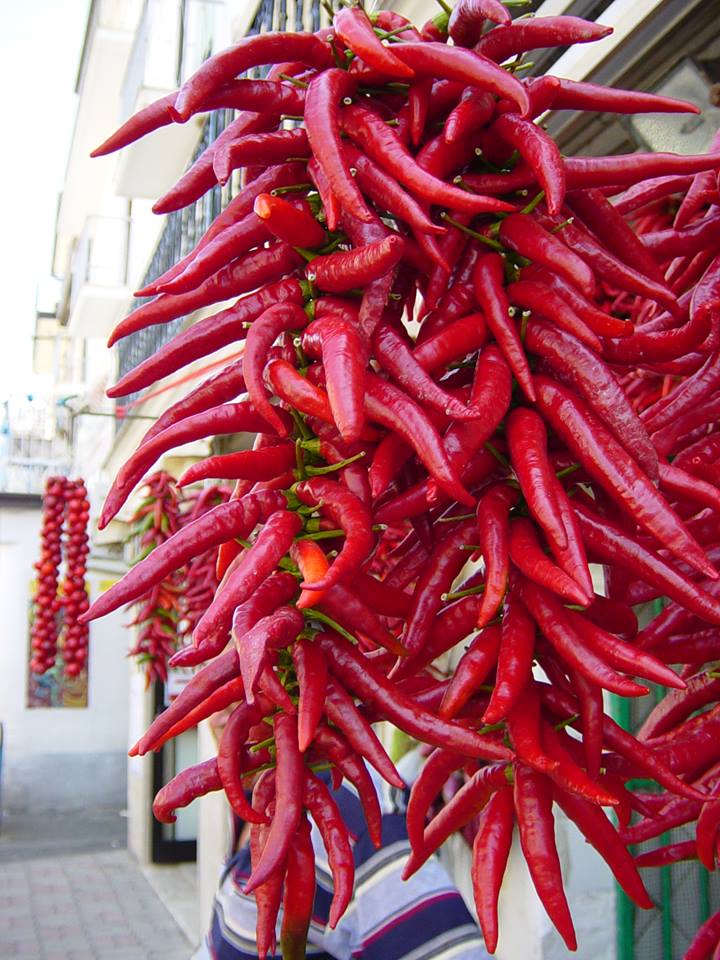
The “Diavolicchio Diamante,” one of the most common peperoncini cultivated along the Tyrrhenian coast in the Province of Cosenza. This peperoncino has also been called “cangarillo” and “peperoncino a sigaretta.”
So from where does the peperoncino hail? Originally, the New World, where it has been cultivated for thousands of years. Christopher Columbus “discovered” the spicy pepper on his first voyage to America. He brought it back to Spain, and it quickly spread throughout Europe.
The botanical name for peppers in general is capsicum from the Latin capsa, meaning box, most likely a description of the pod, which resembles a container. The Italian word peperone comes from its spicy similarity to pepe, which refers to pepper (as in black). And to confuse matters further, the plural of peperone (pepper/sweet pepper) is peperoni. However, if you ask for a pepperoni pizza in Italy, you’ll get a pizza with bell peppers on it.
Peperoncino (chile, chile or hot pepper, chilli-British) is the diminutive of peperone.
PEPERONCINO: SPICE OF THE POOR

Peperoncino in olive oil
The peperoncino got its foothold with the less affluent ranks of Italian society, particularly in the south. The spicy little pepper brought a new twist to what is referred to as the cucina povera (cuisine of the poor). It was also used for preserving meat, which was especially helpful in warmer climates without refrigeration.
The prevalence of the peperoncino in kitchens of the poor brought about its nickname, spezia dei poveri (spice of the poor).
PEPERONCINO CALABRESE
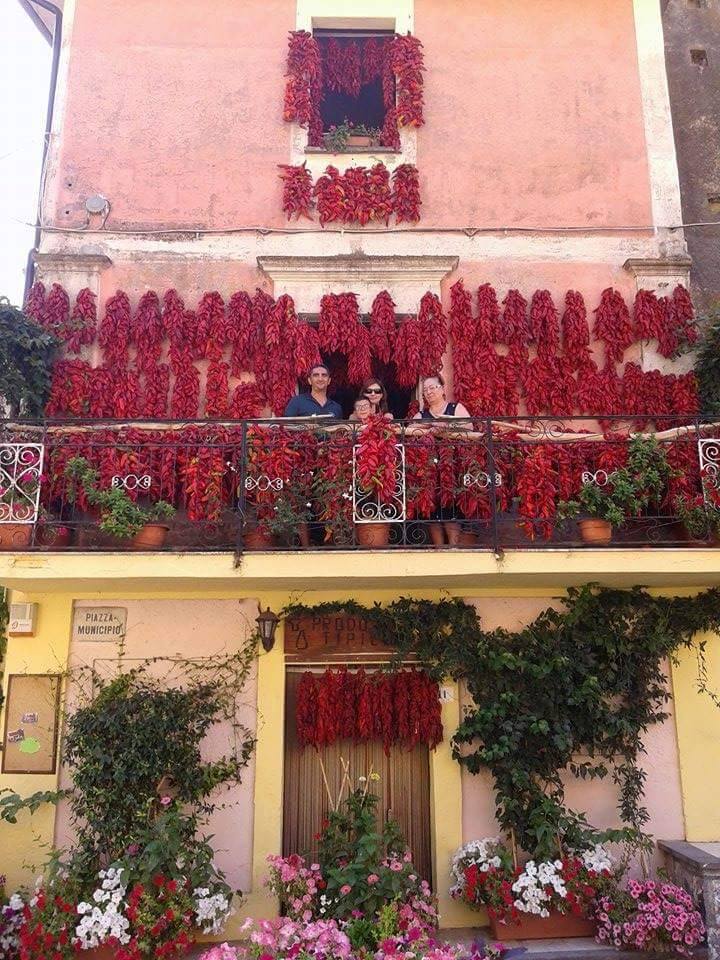
“La Casa dei Peperoncini” (The House of Peperoncini) – a fruit store specializing in peperoncini and peppers in Orsomarso, Calabria -Who wouldn’t want to have their photo taken amidst the spectacular peppers? (Photo courtesy of the store)
The peperoncino calabrese flourishes happily and spicily in the Calabrian climate. The locals have an affinity for the little red pepper, known in various areas as the cancarillo, pipazzu, pipi vruscente and diavulillo. The spicy peperoncino calabrese has played an important part in the cuisine for centuries, and the recipes are being recognized more and more outside the region.
One of the “hot” tickets on the international stage at the moment is the ‘nduja, a spicy, spreadable salami created in the town of Spilinga near Tropea. The ‘nduja is made with pork lard, guanciale (cheek) and pancetta (bacon) mixed with peperoncino calabrese. The pizza calabrese in Calabria will often feature the ‘nduja amongst its ingredients. A traditional dish from Calabria’s Ionian coast is sardella or caviale (caviar) calabrese, baby fish in peperoncino and herbs, a delicacy that has been commercially suppressed by the European Union’s ban on whitebait harvesting.
PEPERONCINO CALABRESE ON TABLES
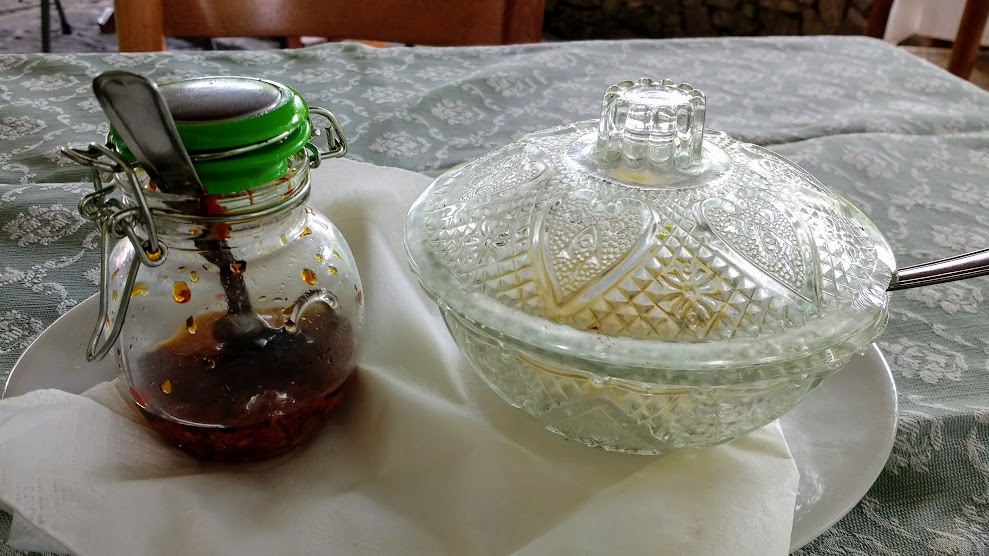
Table Essentials: peperoncino calabrese and parmigiano
The peperoncino calabrese is used in sausage and cold cuts, pasta sauces, and on pizza and bruschetta, but that isn’t always enough for those with a spicy tooth. Of course, piquant isn’t for everyone, not even in Calabria. But for those who would like to add the zesty flavor to their pasta with broccoli or tomato sauce, for example, peperoncino calabrese is found on tables as a general condiment: fresh, in oil or dried. There are those who add a spoonful to whatever they eat. And it isn’t uncommon to see an older man lithely reach into his jacket pocket, pull out a peperoncino from home and cut it into little pieces over his plate.
For tourists, the perpeoncino calabrese is playfully packaged in what is called the bomba calabrese. The Calabrian bomb comes with a fuse sticking up from the glass jar filled with a mixture of finely chopped vegetables drenched in a healthy dose of peperoncino and oil.
ACCADEMIA ITALIANA DEL PEPERONCINO OR THE ITALIAN PEPERONCINO ACADEMY
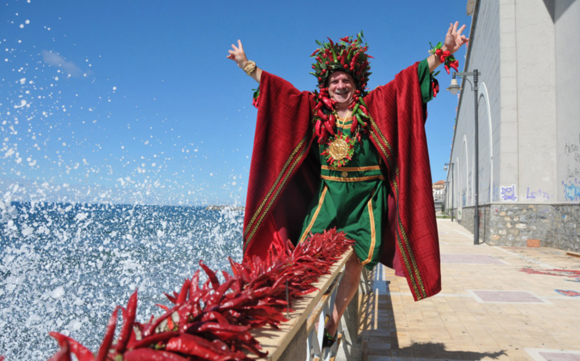
Unbridled enthusiasm for the peperoncino calabrese (Photo courtesy of the Accademia Italiana del peperoncino)
With the quality and popularity of the peperoncino calabrese, it’s no wonder that Calabria is the home to the Italian Peperoncino Academy. From its headquarters in Diamante on the region’s northwest coast the academy organizes dinners and cooking classes with a focus on the peperoncino, publishes a magazine, and has a library and an experimental center for the peperoncino’s cultivation. Every year the organization puts on the Peperoncino Festival the second weekend of September (from Wednesday to Sunday) in Diamante, Calabria.
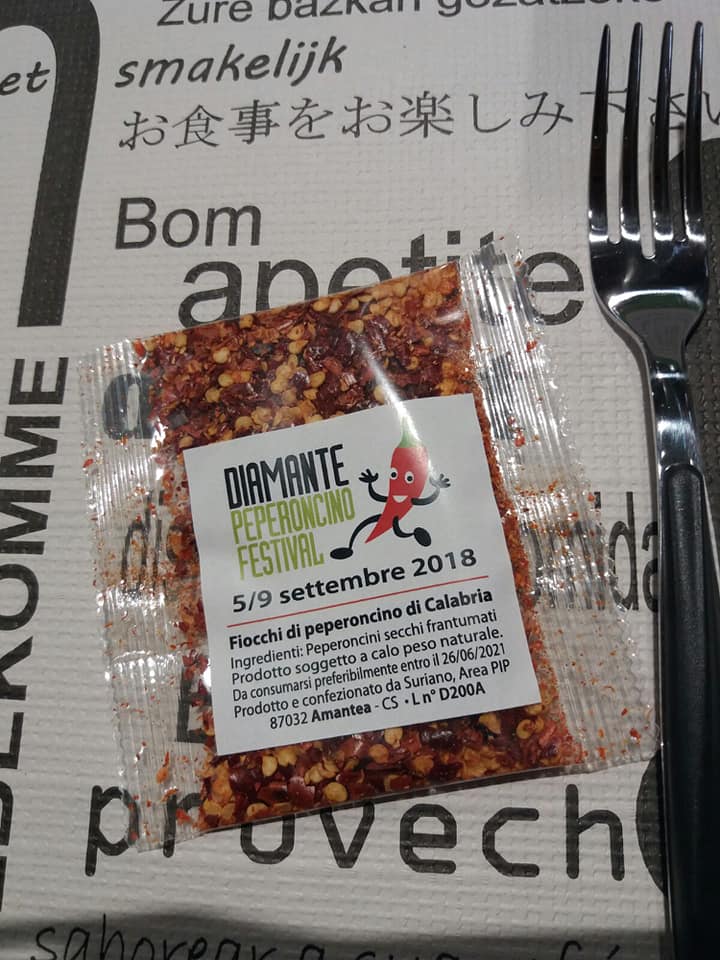
Dried peperoncino calabrese ready for the Peperoncino Festival in Diamante (photo courtesy of the Accademia Italiana del peperoncino)
In addition to the presentation of the peperoncino in all its forms, food exhibitions and folkloric events, the festival hosts a peperoncino eating contest. The finalists face off in a 30-minute competition in which the spicy peppers can only be tamed with bread and oil.
SPAGHETTI AGLIO, OLIO E PEPERONCINO
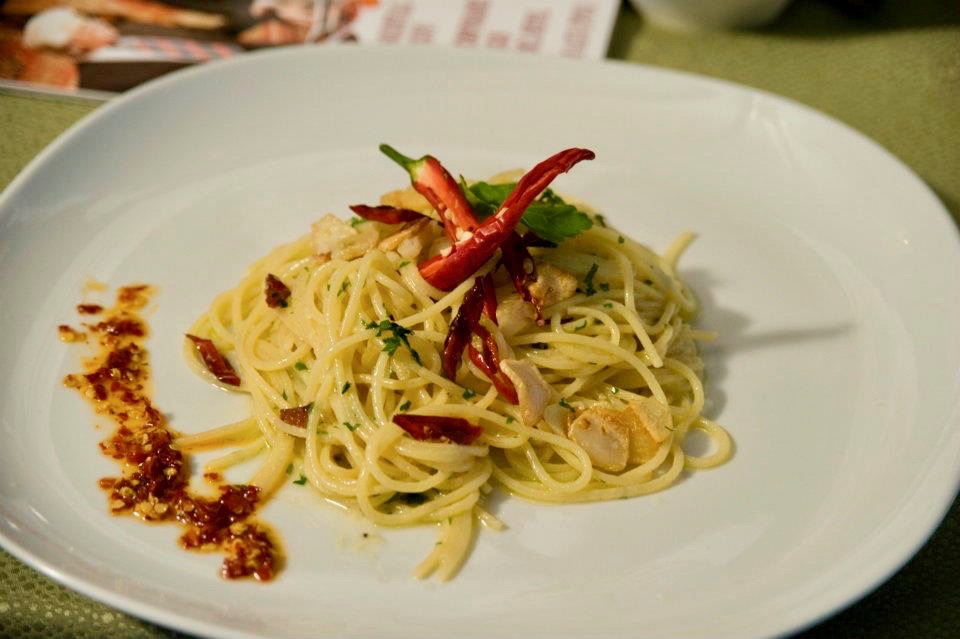
Spaghetti aglio, olio, peperoncino (photo courtesy of the Accademia italiana del peperoncino)
The Peperoncino Festival also hosts chefs, and a few years ago the recently deceased Italian chef Gualtiero Marchesi, one of Italy’s most famous, was honored. For the event, his version of spaghetti aglio, olio e peperoncino was prepared. By now this simple yet flavorful dish with garlic, oil and peperoncino, often whipped up quickly at home, is fairly common on restaurant menus throughout the world.
So, how did this renowned chef put his personal touch on the classic dish? Curiously, Chef Marchesi liked cold pasta. He dressed the cooled pasta with olive oil, roasted garlic and peperoncino. Buon appetito!
PEPERONCINO CALABRESE
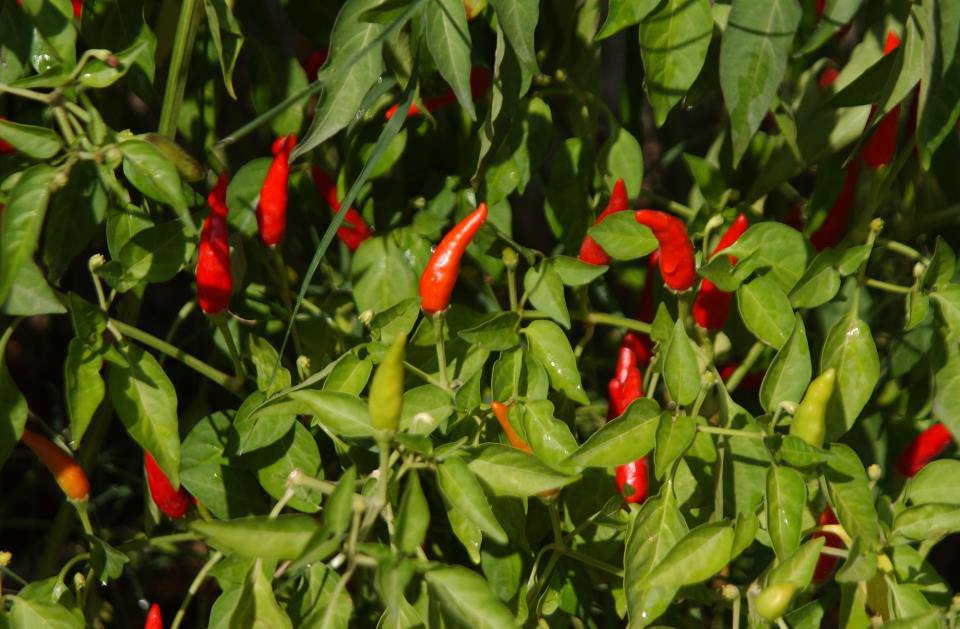
Peperoncino plant (photo courtesy of the Accademia italiana del peperoncino)
The peperoncino can be used in an infinite number of recipes, from antipasti to gelato. Innovative dishes are being created all the time. Personally, I love the lasting piquancy of super dark chocolate with peperoncino.
How about trying peperoncino marmalade or honey, peperoncino preserved in oil, creamy peperoncino, spicy tomato sauce, peperoncino olive oil, sausages, salamis and cheeses, tuna with peperoncino, cakes and cookies, digestifs and grappas with peperoncino?
It will get your heart pumping.
Would you like to savor the peperoncino calabrese in Calabria? Join me on one of my comprehensive, small group tours of Calabria, where you will experience the region’s incredible food, immerse yourself in its beauty and soak up the culture first hand! See the detailed itineraries on the Calabria Tour page.
Visit the Accademia italiana del peperoncino’s Facebook page for information on their yearly festival. And don’t miss the beautiful La Casa dei Peperoncini when in the neighborhood of Orsomarso in the Province of Cosenza.
Other special foods of Calabria include the Incredible Bergamot, the Precious Diamante Citron and simply the Best Licorice.
Read all about the fascinating Calabrian region in my book Calabria: The Other Italy, described by Publisher’s Weekly as “an intoxicating blend of humor, joy, and reverence for this area in Italy’s deep south,” and explore Calabria’s northern neighbor in my book Basilicata: Authentic Italy, “recommended to readers who appreciate all things Italian” by the Library Journal.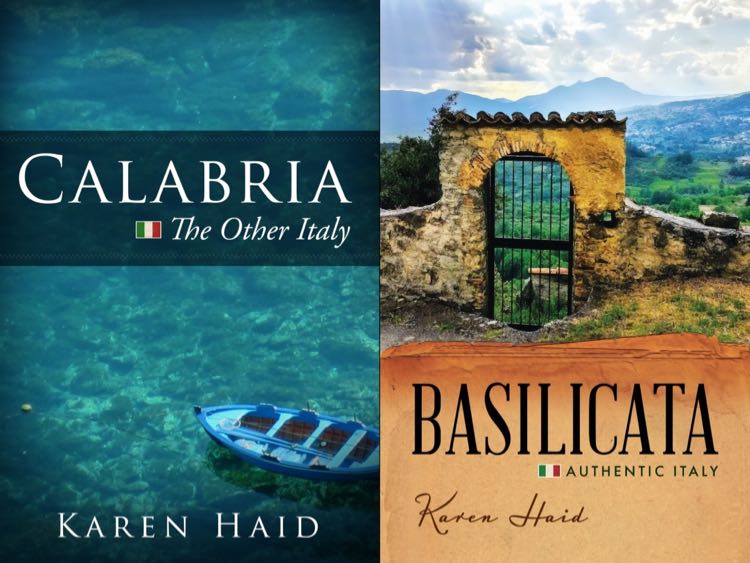
“Like” Calabria: The Other Italy’s Facebook page and follow me on Karen’s Instagram and Karen’s Twitter for more beautiful pictures and information.
Sign up below to receive the next blog post directly to your email for free.

Comments 14
Fantastic and interesting post! I especially enjoyed seeing the photos of the homes proudly wearing their peperoncini!
Author
Thanks, I agree. Bright red peppers hanging from houses are a sight to behold. The “Casa dei Peperoncini” (pictured above), a fruit store specializing in peperoncini,is particularly inviting.
Ci vuole sempre un po’ di peperoncino 🌶 🌶🌶!
Author
😀
Love the little peppers! They are so colourful. If only I liked spicy things 🙁
Author
I agree, they do look beautiful. Too bad you don’t like them, perhaps just a smidgeon before they reach a definitive spicy.
It’s amazing how many “poor people’s dishes” are now universally loved and hailed as haute cuisines in high-end restaurants.
Author
Yes, a renewed interest in and a longing for genuine cuisine.
Capsicum ……… the closest I will get to hot peppers !!! 😲 Have been using a medicinal form of it , to relieve a constant & very annoying ITCH on my back !!! 😱😣😵😨 It gives a burning sensation, but is SOMEWHAT helpful. 😕
Author
Um… interesting…
Love the photo of the house of peperoncino!
Author
Yes, it doesn’t get any livelier than that house!
Karen, what a great job you have done with your food blog celebrating Calabrian culture and cuisine. My Father, Antonino Rocco Russo was born in Roccoforte Reggio Calabria in 1921. He said they were so poor they lived upstairs and the cows and chickens lived downstairs :). He came to the U.S. at age five and made a wonderful life for himself and our family. Reading just this one article about the peperoncini made me feel so connected to the land of my Father, thank you. I look forward to perusing your blog and to future posts. Best wishes!
Author
I’m so glad that I brought back such good memories for you. With around 100 posts about Calabria, my blog will keep you busy! Thank you for your good wishes.